Grand Lodge History (1980 – 2000)
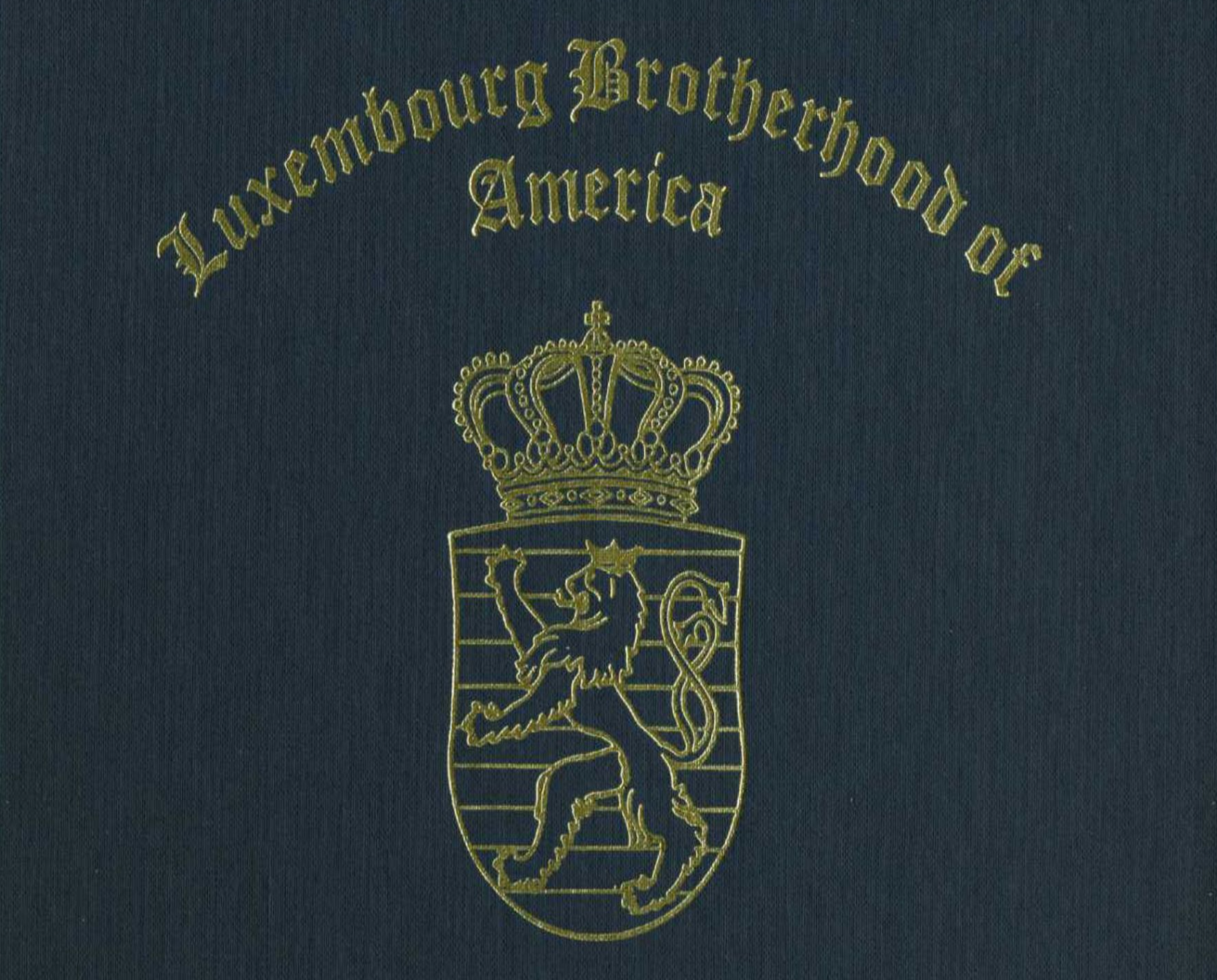
1980 – 2000
In 1980, Section 21, located in Wilmette, dedicated a memorial garden at the intersection of Glenview Road and Wilmette Avenue. The site was the family farm of Mike Loutsch, a charter member of Section 21. The land remained a farm until Mike died in 1978, despite the fabulous wealth that could have been his by selling the land to voracious land developers.
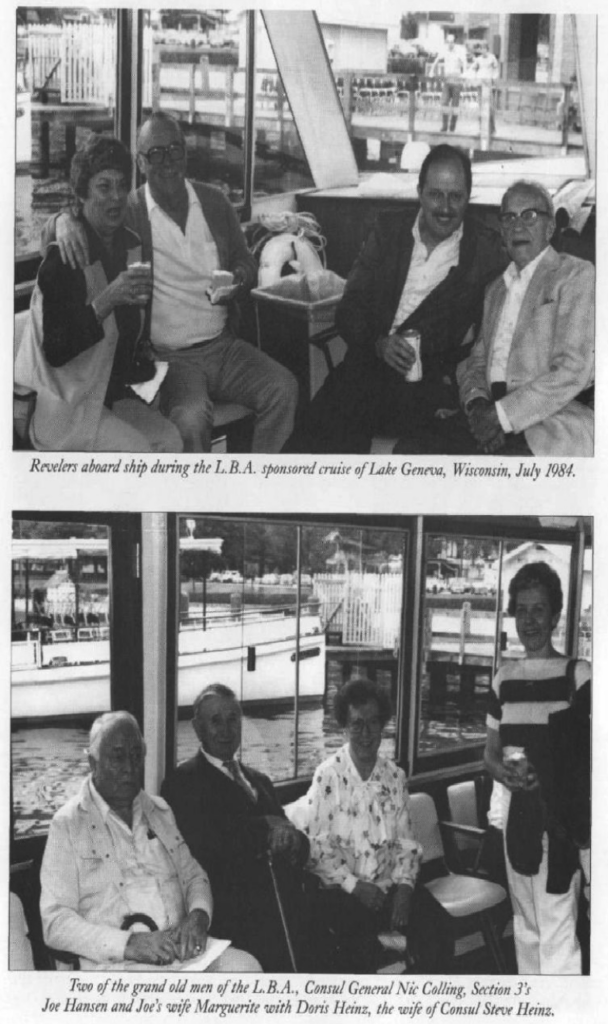
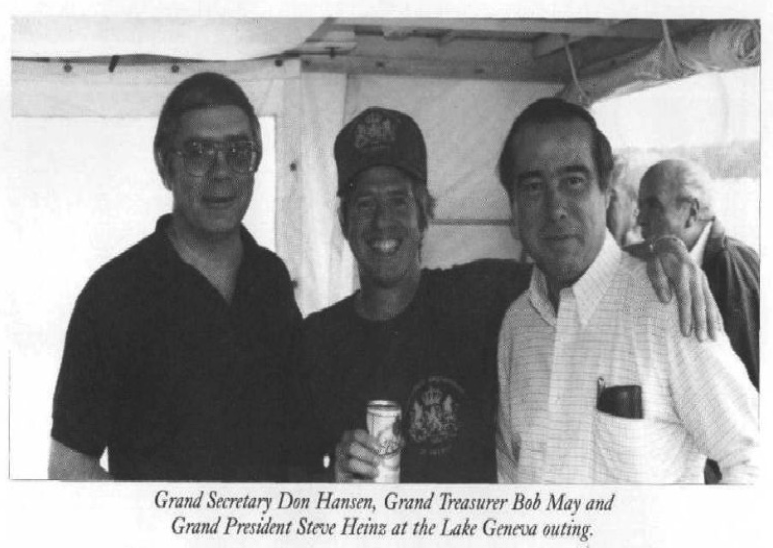
In 1984, President Ronald W. Reagan extended an invitation to the Grand Duke for a state visit. Once again, Chicago was to be the last stop on the royal itinerary. In response, Section 3’s Nic Colling, Section 8’s Steve Heinz, and Section 15’s Dick Witry formed a committee to prepare for the royal visitors. The outpouring of generous support from all the Luxembourg clubs, and societies, including the L.B.A. was overwhelming.
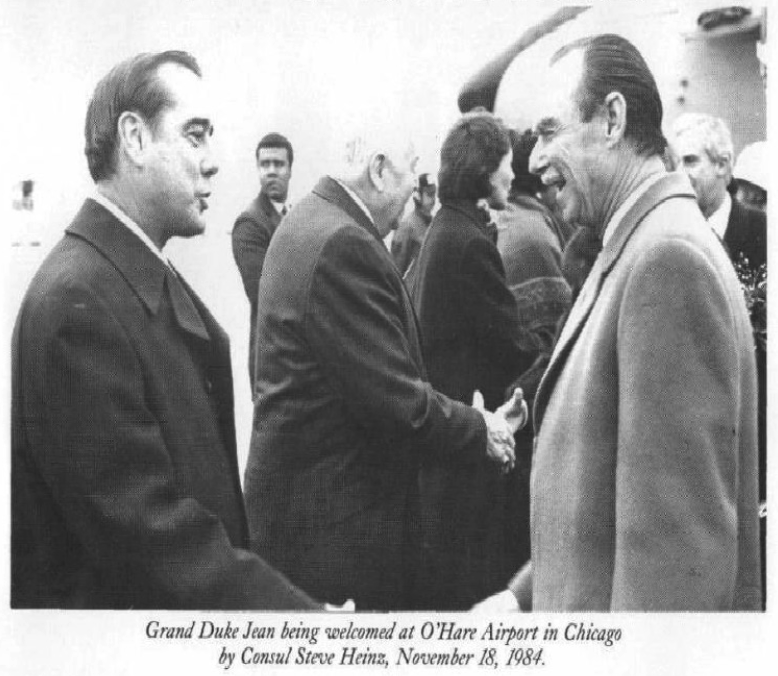
The first stop in Chicago was a concelebrated high mass in which Joseph Cardinal Bernardin was the principal celebrant, assisted by seventeen priests of Luxembourg ancestry including Section 15’s very own member, the Reverend John Jung, C.M.
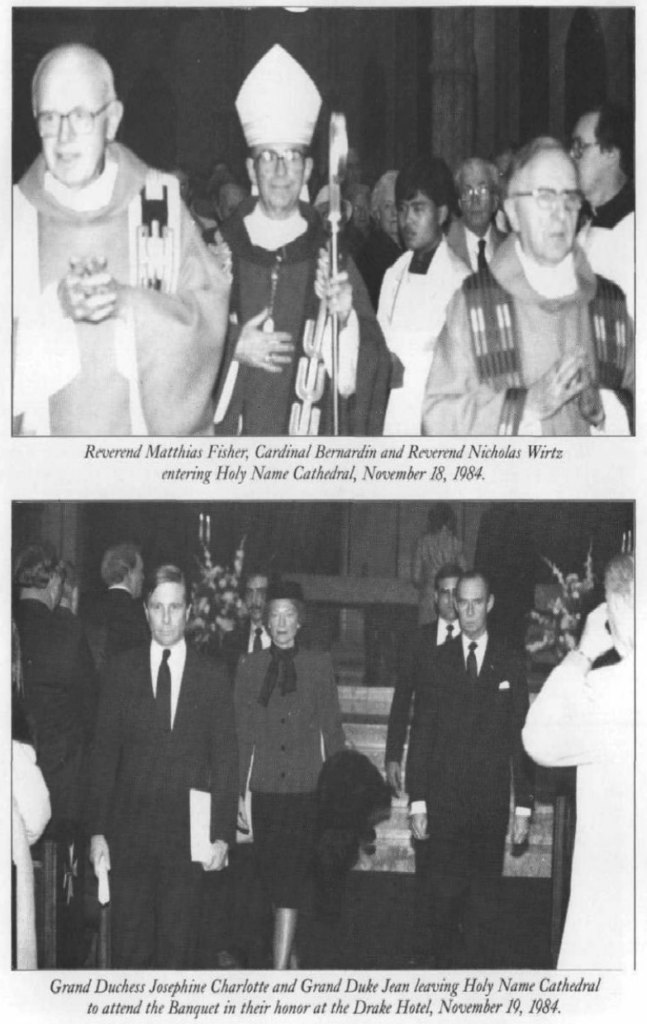
Their Royal Highnesses, Grand Duke Jean and Grand Duchess Josephine Charlotte were in the sanctuary with numerous other dignitaries. The Cardinal’s welcome to Their Royal Highnesses was both warm and uplifting. Father Matthias Fisher rose to the occasion and gave a stirring homily, particularly stressing how devotion to our Blessed Mother brought the peoples of Luxembourg and the United States together by honoring Our Lady, Consoler of the Afflicted (Patroness of Luxembourg) and the Immaculate Conception (Patroness of the United States).
Following the mass at Holy Name Cathedral, the party was whisked to the Drake Hotel. A receiving line was formed and each of the 425 guests was announced to the Grand Duke, Grand Duchess, Prince Henri, and Princess Maria Theresa by Section 15’s Dick Witry.
The party then moved into the flower and greenery bedecked Gold Coast Room for a gala banquet accompanied by Luxembourg wine. Souvenir dishes commemorating the event, manufactured by Villeroy & Boch, were placed on each table. Guests were entertained by the Chicago Brass Quintet playing the Royal Anthem, the National Anthem of the United States, and the National Anthem of Luxembourg.
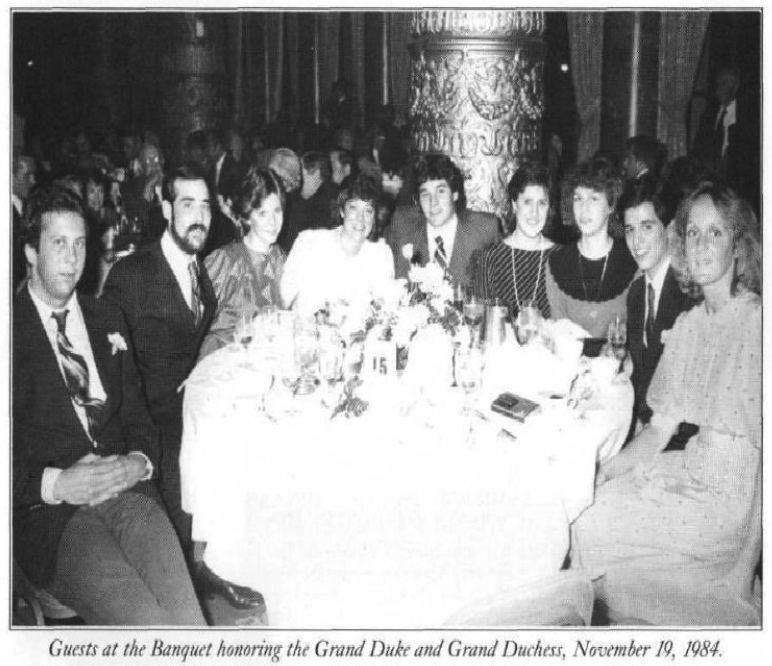
Toasts were proposed by Nicholas Colling, Consul General of Luxembourg, and by Grand Duke Jean. Emil Weitzel, President of the American Luxembourg Society of Luxembourg, extended welcoming remarks to the dinner guests. A sterling silver etching of the Chicago skyline with a plaque inscribed “American Luxembourg Friendship Banquet-November 18, 1984” was presented to the Royal Family along with a proclamation from the State of Illinois presented by State Senator Phillip Rock, President of the Illinois Senate, who is of Luxembourg ancestry.
The success of the evening was measured by the large number of people of Luxembourg heritage who supported the efforts of the Grand Lodge, its officers, and friends. Well, represented were members of L.B.A. Sections 3, 8, 15, 21, the Luxembourg American Social Club, and the Independent Club. Members of the Wisconsin Luxembourg Society were also in attendance.
The second day of festivities for the Royal Family started with a tour of several cultural centers. After an early visit to City Hall, where the Grand Duke was presented with a key to the city by His Honor, Mayor Washington, the City Council proclaimed the day as “Luxembourg Day” in Chicago.
From City Hall the visitors were taken to the new Art Institute building on Columbus Drive, where they were given a guided tour of the New Impressionist Art Exhibit”. It was here that the Grand Duke was pleased to see the painting, “The Beach at Cabassan,” by Henri Edward Cross, which portrayed the location of the Ducal summer home in France.
After viewing the art exhibit, the party was escorted to the refurbished Trading Room of the Chicago Stock Exchange where they were served a delightful luncheon, hosted by Mayor Washington and members of the Chicago City Council. The Honorable Philip Rock acted as Master of Ceremonies.
The next stop was the Field Museum where they viewed an American Indian Exhibit. The museum presented the Grand Duke with a hand-carved totem pole as a gift. As a grand finale, Grand Duke Jean and his party traveled to the Museum of Science & Industry. It was here that they opened the month-long exhibit of *Luxembourg Immigration to the United States.” During his tour, the Grand Duke saw a picture of his mother, Grand Duchess Charlotte, riding in a motorcade with the late Mayor Richard J. Daley during her state visit in 1963.
The month-long exhibit portrayed in photos and news stories the immigration of Luxembourgers to America during the past 100 years. A complete story about the Royal visit appeared in the December 1984 issue of the Luxembourg News of America, which is reprinted here:
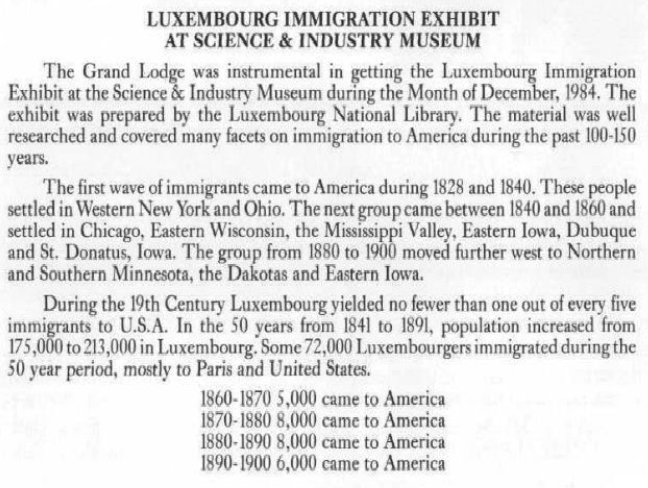
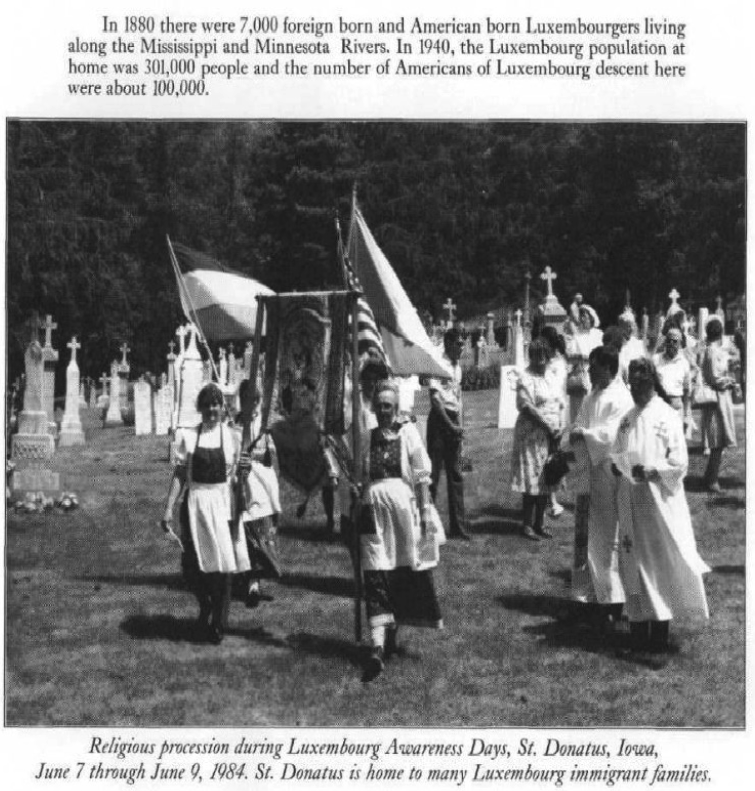
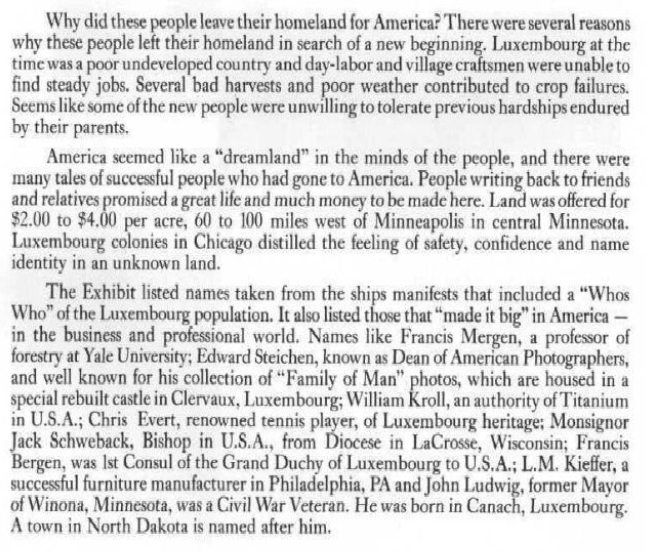
The opening of the Luxembourg exhibit was a wonderful ending to a very busy two days. Shortly thereafter, the Grand Duke and Grand Duchess were on their way home, and the Grand Lodge, its officers, friends, and supporters could tiredly reflect on a job superbly done.
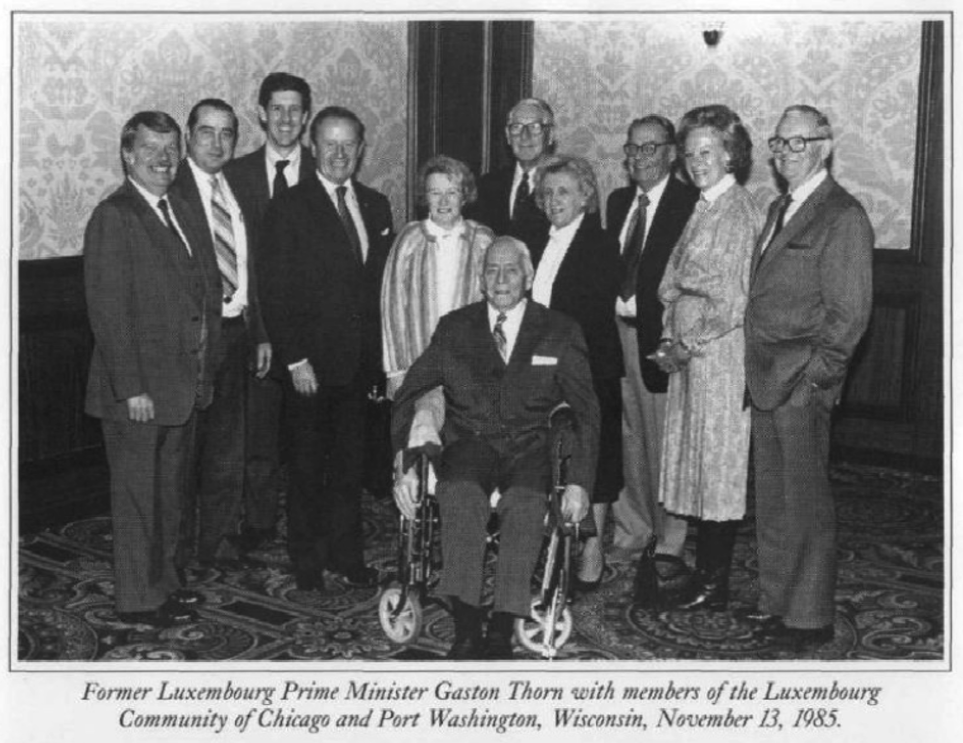
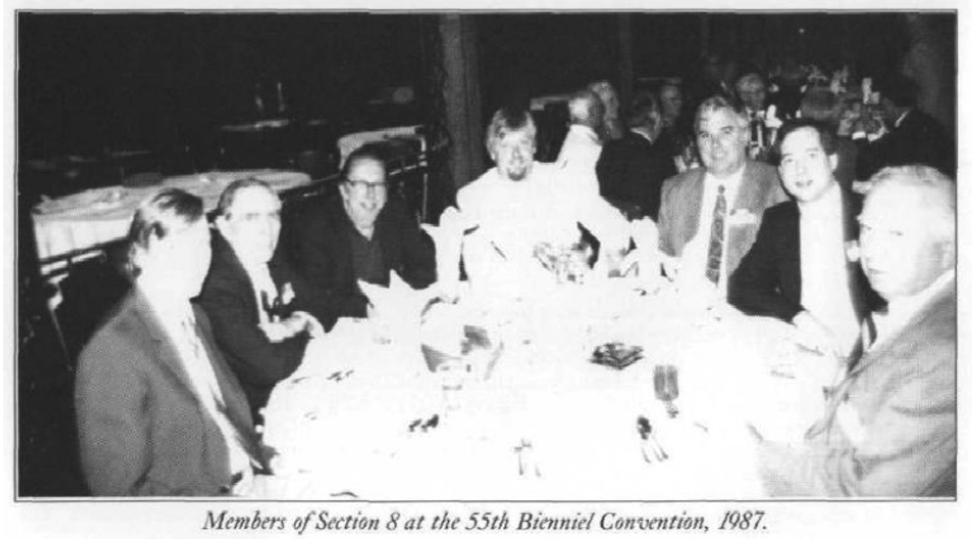
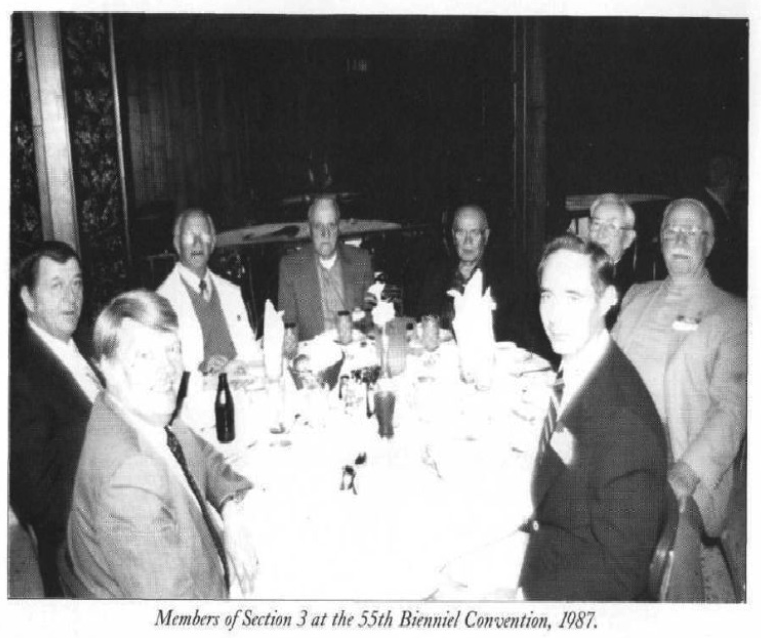
A fitting end to this essay would be to restate the names of the men whose contributions to the L.B.A. were significant and meaningful. It is to them that this work is dedicated:
| John Hankes | John Schmit | John Diederich | Nic Stirn |
| John Watry | John Glesener | Nick Nilles | Peter Weiland |
| Paul Hermes | Matt Huss | J.P. Kieffer | Michael Treinen |
| Joseph Hohs | Joseph Eischen | John M. Manger | Henry Dieschbourg |
| Fred Gilson | Charles Schwind | Perry Daubenfeld | Leo Eschette |
| Harry Trausch | Joseph J. Witry, Sr. | Nick Hoffmann | Nicholas Colling |
| Bernard Klein | Fred Pesche, Sr. | Henry Geimer | Stephen Heinz |
| Joseph Puetz | Donald J. Hansen | Eugene Ross | Don Johanek |
| John R. Murphy | Glenn Murphy |
The Grand Lodge is the umbrella under which the five Sections of the LBA operate. It consists of a Grand President, Grand Vice-President, Grand Treasurer, Grand Secretary, three Trustees chosen at large, and four Grand Representatives – one from each section. These were the men who guided the LBA in the first years following the Centennial celebration.
| Grand President | Steve Heinz | Section 8 |
| Grand Vice President | Joseph Puetz | Section 21 |
| Grand Treasurer | Robert May | Section 21 |
| Grand Secretary | Donald Hansen | Section 15 |
| Grand Trustee | Richard Hoffmann | Section 8 |
| Grand Trustee | Tony Engels | Section 21 |
| Grand Trustee | John Keil | Section 3 |
In 1988, the State of Illinois contacted Grand President Steve Heinz and inquired as to the number of members in the LBA. The State of Illinois Department of Insurance was conducting an audit of insurance organizations under its jurisdiction to determine which organizations remained qualified under the law. As its membership grew older and died, and replacement members were less numerous, it was determined that the LBA no longer qualified and would have to liquidate its insurance operation. Throughout 1988-90, this was a major topic of discussion. Upon the death of Grand President Steve Heinz in 1989, Interim Grand President Joe Puetz led the discussions regarding the liquidation of the insurance operations. Finally, at the Grand Lodge Convention in 1990, under a plan of liquidation prepared by Section 15 member Dick Witry, the delegates adopted the plan of liquidation and established the new LBA – one without an insurance operation.
Presently, the LBA operates as an Illinois Not-for-Profit organization and as a charitable organization under Section 501(C) of the Internal Revenue Code. At the 1990 convention, those members who voluntarily renounced payment of their insurance pay-out of $150.00, and permitted the Grand Lodge to retain the funds, were: Roger Nordstrom and Joseph McDermott of Section 2, Mel Thillens, Sr., John Nix, Robert Schwartz, George Meyers, Jr and Anthony Schroder of Section 3, Henry Schmitz, Joseph Murphy, Sr., Richard and Peter Hoffmann of Section 8, Al Hansen, Donald Hansen, Joseph J. Witry Jr and Raymond Krier of Section 15 and Robert Holm, Tony Engels and Don Pettinger of Section 21. These men were honored for their generosity by the delegates to the Convention.
THE BROTHERHOOD GOES CO-ED
In the 36 years during which your author has been a member of the LBA, no issue generated as much heat as the question of whether women should be permitted to join the LBA. In the 36 years your author has been a member of the LBA, he has never attended a special meeting of the entire membership except for the one called in February 1996 to pass upon the question of whether women should be admitted to the organization.
The LBA was founded in October 1887 as a Brotherhood. In 1902, the insurance operations commenced insuring the LBA’s members so that the widows and children would not starve. The world was a much different place then. Men held jobs – and women raised children at home. Men smoked – women did not. Men voted – women did not. In later years, when cars became ubiquitous, men drove – women did not. The LBA and its traditions occupied a much different place at its conception than it did during the last decade of the second-millennium anno domini.
One need not belabor the fact that women have, by law, talent, guile, hook or by crook, made great strides in joining their male counterparts as equal partners in the living of life in all its facets although many will argue, with some merit, that there is much work left to do in achieving full equality. In the last decade of the 20th Century, the Grand Lodge and its constituent sections would debate this social phenomenon and, in February 1996, submit to the inevitable. Self-interest would rule!
The first shots were fired at the Grand Lodge meeting held July 11, 1991. Present were Grand President Don Hansen, Grand Vice-President Joe Murphy, Grand Secretary George Meyers, Grand Treasurer Bob May, Grand Trustees Rich Hoffmann and Tony Engels, and Grand Representatives Tony Schroeder, John Murphy, Dick Witry, and Joel Ross. At the time, it was commonplace that one meeting a year would be a dinner meeting – paid for by the Grand Lodge, of course. Brother Tony Engels, concerned about declining membership and the fact that without the wives involved, we would not get too much done, moved that the next Grand Lodge dinner meeting include spouses. Brother Joel Ross seconded the motion.
The minutes reflect that due to discontinuing salary for the Grand Lodge officers, funds would be available to pay for an increased number of dinners. But the question remained as to whether these funds should be used for dinner meetings. Of the ten men who voted on the motion to include spouses at the next dinner meeting of the Grand Lodge, 4 voted in favor, 5 voted against and 1 abstained. The minutes do not reflect the identities of those who voted in favor or those who voted against. Immediately thereafter, the discussion turned to whether a woman’s auxiliary should be established. This discussion was shelved for discussion at a future meeting.
The future meeting turned out to be the 59th Grand Lodge Convention held on May 21, 1992, at the Black Forest Chalet on Waukegan Road in Morton Grove. Grand President Hansen broached the issue. Again, the minutes of the Convention reflect a lengthy discussion; in all events, perhaps because there was no consensus, the issue was once again tabled. Not until the Grand Lodge meeting held on January 4, 1995, did the issue once again appear in the minutes. On this occasion, the issue was not so focused on women as it was on declining membership. The minutes stated that Grand President Hansen is looking for a Membership committee to expand membership and perhaps include women. Increased membership was the stalking horse admitting women was the goal.
At this juncture, it is safe to say that the membership was divided over the issue. Sections 3, 15, and 21 were generally in favor of admitting women; Section 8, the largest Section with approximately 80 members, was not. To gauge the sentiment of the membership, Peter Schroeder of Section 3 was charged with designing a questionnaire to be forwarded to all members. In the winter of 1995, 240 questionnaires were mailed to the membership.
Among the reasons cited in favor of admitting women were:
1) Membership would increase
2) Daughters should have the same opportunities as our sons to participate in the celebration of our Luxembourg heritage
3) Women are already contributing to the organization even though not official members.
Among the reasons for not admitting women were:
1) A proud and long tradition as a men’s organization
2) The name of the organization would have to be changed
3) Women may take over the organization
At the April 5, 1995, Grand Lodge meeting, it was reported that sixty-five members took the time to respond and the straw poll yielded the following results:
Section 3: 16 yes, 1 no
Section 8: 16 yes, 4 no
Section 15: 8 yes, 1 no
Section 21: 4 yes, 2 no
(13 members responded “yes but” or “no but”)
Based on this most favorable showing, Brother Dick Witry was directed to draft a resolution amending the Constitution to permit female membership and to bring it to a Resolutions Committee for discussion.
Before the Convention, Grand President Hansen had the opportunity to write a letter to Brother John Lanners in which he expressed one very important reason why the admission of women was not only important to him but important to the LBA. To set the stage, he reported that six-year-old Teddy Schroeder, a member of the Kanner Kouer, would say at the end of every practice “It’s me, I’m Luxembourg Pride.” Don wrote:
“I can’t tell you what a great feeling it is to realize that there are children today, thirsty for the knowledge of their heritage. They are what the Brotherhood means. They ask questions, why were there once 1,700 members, and today, why are there only 200 or so? and why are these children showing an interest? They are interested because someone took the time out to expose them individually to what it means to have a heritage, a belief, and a pride in one’s own. They are thirsty and they want to know more. They say the words their grandparents spoke, and they love it. (The 1995 trip to Luxembourg during which the Kanner Kouer would perform at various venues.) They are looking forward to Luxembourg. They want to proudly represent our Brotherhood overseas. What a revelation. The vision of youth and children in our Brotherhood? A future, a direction in which to grow. Just think of it. Our Brotherhood, grand as it once was, has experienced such a decline in recent years. There are many reasons for this. Many are merely the result of change and new times. Still, the fact truly is, if things remain the same, the Brotherhood will no longer exist in a few years. I stand very firm with my commitment, conviction, and vision that change is necessary. It is certainly necessary if the next generation is to inherit the pride it should have in its beginnings from this one.”
At the Convention held on May 18, 1995, Grand President Hansen reiterated many of these remarks. He then called upon Brother Peter Schroeder to report on the findings of the survey. He reported that 230 surveys were mailed, 23 returned and 63 were returned to the Grand Lodge. The results were as follows:
Section 3: 23 yes, 1 no
Section 8: 16 yes, 7 no
Section 15: 8 yes, 1 no
Section 21: 5 yes, 2 no
It would seem that the discrepancy between the survey results discussed at the April 5, 1995, Grand Lodge meeting and the survey results discussed at the Convention cannot be reconciled, although the discrepancies are not, in the author’s opinion, material.
Grand President Hansen called on Brother Witry, Chair of the Resolutions Committee, to report on its deliberations. He reported that the committee was comprised of himself and the presidents of the four sections. He further reported that the resolution submitted by the Grand Lodge to admit female members was considered by the Committee and that the amendment was, by a vote of 4 to 1, recommended for adoption.
According to the Convention minutes, there was a lengthy discussion and then some. John Murphy, of Section 8, moved that the matter be tabled so that the Section presidents could take the resolution back to their members and a Special meeting of the Supreme Assembly could subsequently be convened to vote on the matter. After much further discussion, the motion to table was favorably passed by a vote of 22 to 21. Another meeting would be necessary!
At the October 4, 1995, meeting of the Grand Lodge, Grand President Hansen appointed another committee chaired by Brother Peter Schroeder on the issue of admission of women with the mandate that the Committee devise a solution to the apparent impasse among the membership. A special convention would be called once the committee completed its work.
The special committee was comprised of Brothers Peter Schroeder of Section 3, Steve Victor of Section 8, Dick Witry of Section 15, and Don Pettinger of Section 21. The Committee met and advanced the following compromise – give each Section the discretion to admit women rather than make it mandatory.
On January 19, 1996, a Special Convention of the Supreme Assembly, for the sole purpose of considering a resolution to admit women to the LBA, was called by Grand President Hansen. It was to be convened on February 15, 1996, at the Huerter American Legion Hall in Wilmette, Section 21’s home. The only question before the Special Convention was whether women should be admitted. The question could neither be tabled nor amended. A vote would be taken!
At last, the big day arrived. In the spirit of divine guidance, the Rev. John Jung, CM, a member of Section 15, was called upon to ask God for guidance and intervention if necessary. The pros and cons were present. Sixty members of the Brotherhood would decide the fate of the resolution.
After preliminary housecleaning matters were settled, the Supreme Assembly passed a motion permitting each section two speakers to address the main motion i.e., Shall women, at the discretion of each Section, be admitted to full membership in the LBA.
In previous meetings, based on the polling and discussions among the brothers, it was thought that all four Sections would support the admission of women. By the time the Supreme Assembly was convened, it had become apparent that Sections 3, 15, and 21 were mostly in favor of the proposition and that Section 8 was opposed. The compromise put forward – that admission of women would be discretionary with each section, won over Section 21. It would not, however, persuade Section 8.
The following members spoke in favor of the amendment to the by-laws: Grand Secretary George Meyers and Peter Schroeder from Section 3; Dick Witry and Larry Molitor for Section 15; Bob May for Section 21. Section 8 members John Murphy and Larry Saumier summarized the reasons why the amendment should fail.
After the speeches, Grand President Hansen asked for a motion for a roll call vote. Brother Schroeder so moved; Brother Molitor seconded the motion which passed the Assembly. The importance of the issue could be gauged by the request for a roll call of delegates. In almost every circumstance in which your author has participated in votes at the Supreme Assembly, a voice vote has always been the voting method of choice. Not this time. Each delegate would have to stand up and declare his vote. Woe to the ones who voted no and expected to meet at home with open arms.
The result was not a foregone conclusion. At the beginning of the evening, it appeared that Section 8, the largest section in the Brotherhood, would bring out every member to vote no. But as the voting occurred, it became apparent that the Ayes would prevail. The final tally was 34 votes in favor and 26 opposed. Sections 3 and 15 were unanimous in favor; Section 8 was unanimously opposed. Section 21 voted 3 ayes and 1 nay. The Grand Officers voted separately – 5 ayes and 3 nays.
The Supreme Assembly had spoken. One hundred and nine years after its founding, women could, at the discretion of the section, now become members of the LBA.
Seventeen years after this very important decision was made, your author submits that there is not a member today who believes that the decision of the Supreme Assembly was the wrong decision. Today, many of our functions would not take place without the participation of our female members. They participate not as handmaidens but as indispensable equals which ensures the success of whatever event is being held. Just ask the Schobermesse Committee or Section 15’s Sauerbraten Committee. Kudos to Grand President Hansen and the other members of the Grand Lodge who successfully persuaded their brethren to do the right thing – not only for those women who would become members but for the future of the Brotherhood. If the Brotherhood fails to celebrate its Bi-Centennial, it will not be because it failed in this very important endeavor.
Shortly after the amendment passed, several women in Sections 3 and 15 applied for membership. Mothers, wives, and sisters were welcomed.
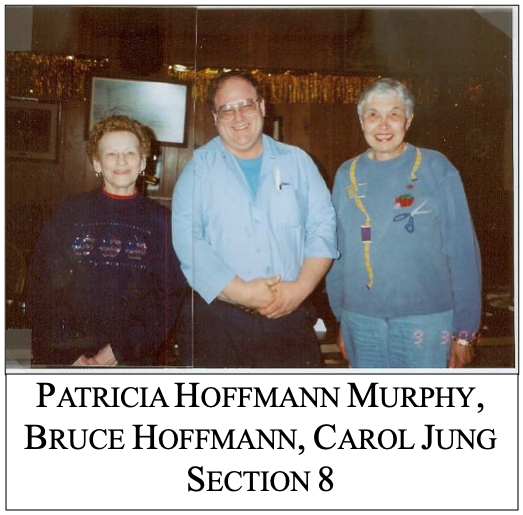
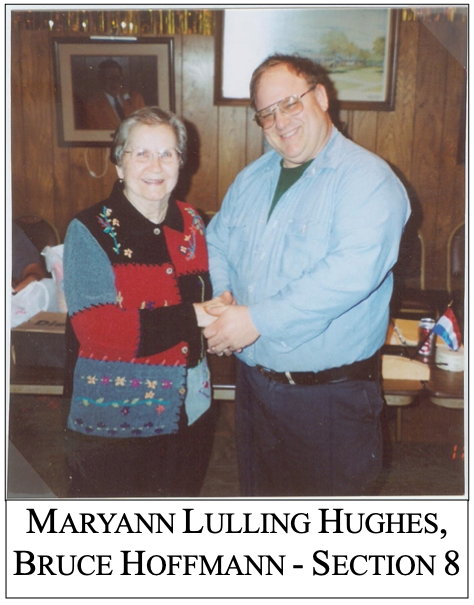
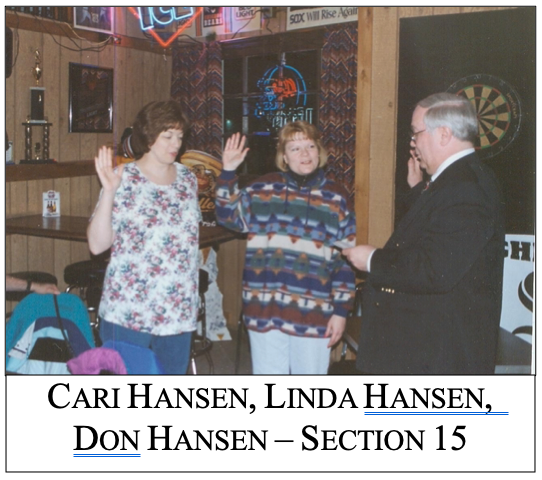
At Section 3’s July meeting of 1996, the following were sworn in as members:
| Mary Clesen | Elsie Endre | Louise Gillen | Virginia Hubbard |
| Loretta Keegan | Florence Lang | Elsie Lohrmann | Ann Powers |
| Madeleine Simon | Maybelle Simon | Fernande Trausch | Marcella Trausch |
| Martha Weishaar | Kristin Schroeder |
Sixteen-year-old Kristin Schroeder was the youngest female member to be admitted. Later that year, Section 3 also admitted JoAnn Ammon, Dolores Chozianin, Betty Frazer, and Karen Winandy.
Section 15 admitted: Future Grand President Linda Hansen Heinz and her sister-in-law, Cari Hansen. Shortly thereafter, Gerda Hansen, spouse of Grand President Don Hansen and Don’s mother, Mary Ann Hansen, would become members of Section 15. Their contributions to the Brotherhood, as well as those of all of its women members, would become significant in the ensuing years.
In 2004, Wynne Thillens of Section 3 became the first female member of the Grand Lodge. She was followed by Section 15’s Barbara Hames who became Grand Secretary in 2007. At the Convention held in 2012, Linda Hansen Heinz, of Section 15, succeeded Peter Schroeder as the first female Grand President of the Luxembourg Brotherhood.
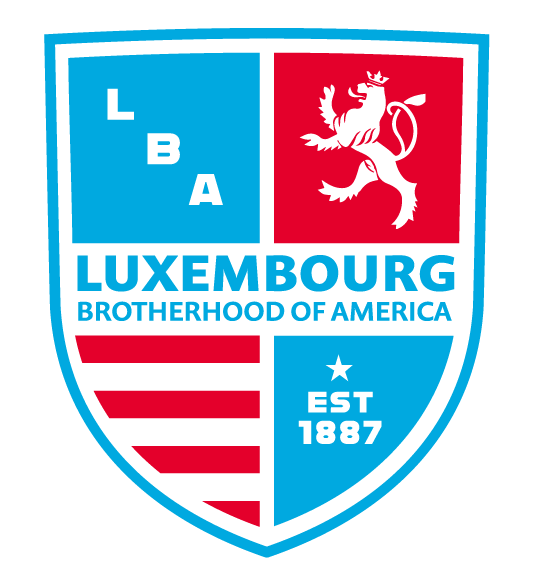
Recent Comments